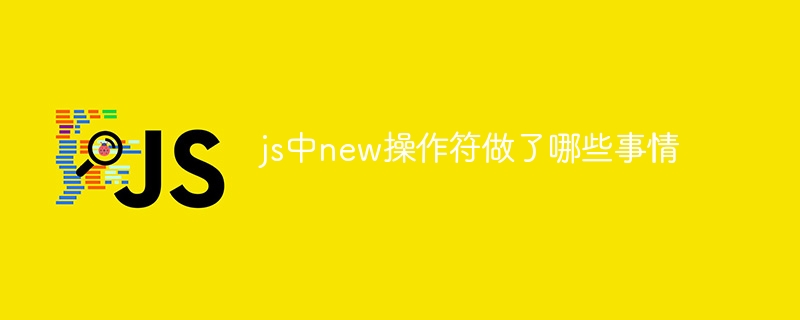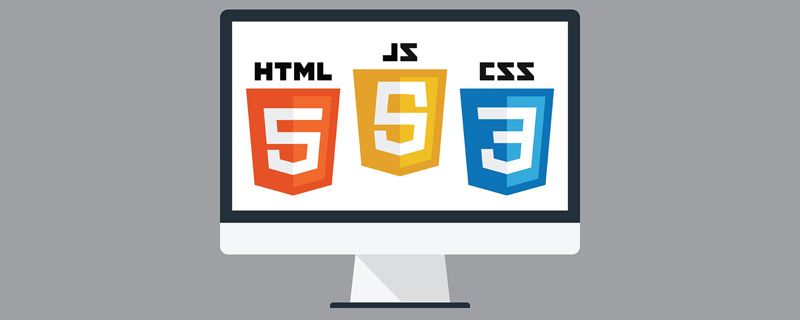1. Convert to string
The interesting thing about ECMAScript’s Boolean values, numbers and primitive values of strings is that they are pseudo-objects. This means they actually have properties and methods.
For example:
Js code
var sColor = "blue";
alert(sColor.length);//outputs "4"
var sColor = "blue";
alert(sColor.length);//outputs "4"
In short, the three main primitive values Boolean values, numbers and strings have toString() method. All objects defined by ECMAScript have a toString() method, whether it is a pseudo object or a real object.
The Boolean toString() method just outputs "true" or "false", and the result is determined by the value of the variable:
Js code
var bFound = false;
alert(bFound.toString());//outputs "false"
var bFound = false;
alert(bFound.toString());//outputs "false"
The toString() method of the Number type is special. It has two There are three modes, namely the default mode and the base mode. In the default mode, the toString() method just outputs the numeric value (whether it is an integer, floating point number or scientific notation) with the corresponding string.
Js code
var iNum1 = 10;
var fNum2 = 10.0;
alert(iNum1.toString()); //outputs "10"
alert(fNum2.toString()); //outputs "10"
var iNum1 = 10;
var fNum2 = 10.0;
alert(iNum1.toString()); //outputs "10"
alert(fNum2.toString()); //outputs "10"
Using the base mode of the toString() method of the Number type, numbers can be output using different bases (bases).
Js code
var iNum = 10;
alert(iNum.toString(2)); //outputs "1010"
alert(iNum.toString(8)); //outputs "12"
alert(iNum.toString(16)); / /outputs "A"
var iNum = 10;
alert(iNum.toString(2)); //outputs "1010"
alert(iNum.toString(8)); //outputs "12 "
alert(iNum.toString(16)); //outputs "A"
2. Convert to number
ECMAScript Two methods are provided to convert non-numeric primitive values into numbers, namely parseInt() and parseFloat().
Note: Only when these methods are called on the String type (except Number) can they run correctly. NaN will be returned for other types.
For example:
Js code
var iNum1 = parseInt("1234blue"); //returns 1234
var iNum2 = parseInt("oxA"); //returns 10
var iNum3 = parseInt("22.5"); //returns 22
var iNum4 = parseInt("blue"); //returns NaN
var iNum1 = parseInt("1234blue"); //returns 1234
var iNum2 = parseInt("oxA"); //returns 10
var iNum3 = parseInt("22.5"); //returns 22
var iNum4 = parseInt("blue"); //returns NaN
parseInt() method There is also base mode, which can convert binary, octal, hexadecimal or any other base string into a decimal integer. The second parameter specifies which base to parse.
Js code
var iNum1 = parseInt("AF ",16); // returns 175
var iNum2 = parseInt("10",2); // returns 2
var iNum3 = parseInt("10",8); // returns 8
var iNum4 = parseInt("10",10); //returns 10
var iNum1 = parseInt("AF",16);// returns 175
var iNum2 = parseInt("10",2); // returns 2
var iNum3 = parseInt("10",8); //returns 8
var iNum4 = parseInt("10",10); //returns 10
Note: If the decimal number contains leading 0s, it is best to use base 10, otherwise the value obtained will be octal.
Js code
var iNum1 = parseInt("010"); // returns 8
var iNum2 = parseInt("010",8); // returns 8
var iNum3 = parseInt("010" ,10);//returns 10
var iNum1 = parseInt("010"); // returns 8
var iNum2 = parseInt("010",8); //returns 8
var iNum3 = parseInt("010",10);//returns 10
The parseFloat() method is similar to the parseInt() method, starting from position 0 and looking at each character until it is found to the first non-valid character, and then convert the string before that character into numbers. For this method, the first decimal point is a valid character. If two decimal points are used, the second decimal point will be considered invalid. Another difference in using this method is that the string must represent a floating point number in decimal form.
Js code
var fNum1 = parseFloat ("1234blue"); //returns 1234.0
var fNum2 = parseFloat("0xA"); //returns NaN
var fNum3 = parseFloat("22.5"); //returns 22.5
var fNum4 = parseFloat("22.34.5");//returns 22.34
var fNum5 = parseFloat("0908");//returns NaN
var fNum6 = parseFloat("blue");//returns NaN
var fNum1 = parseFloat("1234blue"); //returns 1234.0
var fNum2 = parseFloat("0xA"); //returns NaN
var fNum3 = parseFloat("22.5"); //returns 22.5
var fNum4 = parseFloat("22.34.5");//returns 22.34
var fNum5 = parseFloat("0908");//returns NaN
var fNum6 = parseFloat("blue");//returns NaN
3. Forced type conversion
The three types of forced type conversion available in ECMAScript are as follows:
(1).Boolean(value)
Convert the given value into Boolean type.
The Boolean() function will return true when the value to be converted is a string, non-zero number or object with at least one character. If the value is an empty string, the number 0, undefined or null, it will return false.
For example:
Js code
var b1 = Boolean(""); // false;
var b2 = Boolean("hi");//true
var b3 = Boolean(100);//true
var b4 = Boolean(null );//false
var b5 = Boolean(0);//false
var b6 = Boolean(new Object());//true
var b1 = Boolean(""); // false;
var b2 = Boolean("hi");//true
var b3 = Boolean(100);//true
var b4 = Boolean(null);//false
var b5 = Boolean(0);//false
var b6 = Boolean(new Object());//true
(2).Number(value)
Converts the given value to a number (can be an integer or a floating point number).
Remember that the parseInt() and parseFloat() methods only convert the string before the first invalid character, so "4.5.6" will be converted to "4.5". Casting with Number(), "4.5.6" will return NaN because the entire string value cannot be converted to a number. If the string can be completely converted, Number() will determine whether to call the parseInt() method or the parseFloat() method.
For example:
Js code
Number( false);//0
Number(true);//1
Number(undefined);//NaN
Number(null);//0
Number("5.5");/ /5.5
Number("56");//56
Number("5.6.7");//NaN
Number(new Object());//NaN
Number(100 );//100
Number(false);//0
Number(true);//1
Number(undefined);//NaN
Number(null);//0
Number("5.5");//5.5
Number("56");//56
Number("5.6.7");//NaN
Number(new Object()) ;//NaN
Number(100);//100
(3).String(value)
Convert the given value into a string.
The only difference from calling the toString() method is that casting a null or undefined value can generate a string without raising an error:
Js code
var s1 = String(null);//"null"
var oNull = null;
var s2 = oNull.toString();//causes an error
 如何使用JS和百度地图实现地图平移功能Nov 21, 2023 am 10:00 AM
如何使用JS和百度地图实现地图平移功能Nov 21, 2023 am 10:00 AM如何使用JS和百度地图实现地图平移功能百度地图是一款广泛使用的地图服务平台,在Web开发中经常用于展示地理信息、定位等功能。本文将介绍如何使用JS和百度地图API实现地图平移功能,并提供具体的代码示例。一、准备工作使用百度地图API前,首先需要在百度地图开放平台(http://lbsyun.baidu.com/)上申请一个开发者账号,并创建一个应用。创建完成
 js字符串转数组Aug 03, 2023 pm 01:34 PM
js字符串转数组Aug 03, 2023 pm 01:34 PMjs字符串转数组的方法:1、使用“split()”方法,可以根据指定的分隔符将字符串分割成数组元素;2、使用“Array.from()”方法,可以将可迭代对象或类数组对象转换成真正的数组;3、使用for循环遍历,将每个字符依次添加到数组中;4、使用“Array.split()”方法,通过调用“Array.prototype.forEach()”将一个字符串拆分成数组的快捷方式。
 如何使用JS和百度地图实现地图多边形绘制功能Nov 21, 2023 am 10:53 AM
如何使用JS和百度地图实现地图多边形绘制功能Nov 21, 2023 am 10:53 AM如何使用JS和百度地图实现地图多边形绘制功能在现代网页开发中,地图应用已经成为常见的功能之一。而地图上绘制多边形,可以帮助我们将特定区域进行标记,方便用户进行查看和分析。本文将介绍如何使用JS和百度地图API实现地图多边形绘制功能,并提供具体的代码示例。首先,我们需要引入百度地图API。可以利用以下代码在HTML文件中导入百度地图API的JavaScript
 如何使用JS和百度地图实现地图热力图功能Nov 21, 2023 am 09:33 AM
如何使用JS和百度地图实现地图热力图功能Nov 21, 2023 am 09:33 AM如何使用JS和百度地图实现地图热力图功能简介:随着互联网和移动设备的迅速发展,地图成为了一种普遍的应用场景。而热力图作为一种可视化的展示方式,能够帮助我们更直观地了解数据的分布情况。本文将介绍如何使用JS和百度地图API来实现地图热力图的功能,并提供具体的代码示例。准备工作:在开始之前,你需要准备以下事项:一个百度开发者账号,并创建一个应用,获取到相应的AP
 js中new操作符做了哪些事情Nov 13, 2023 pm 04:05 PM
js中new操作符做了哪些事情Nov 13, 2023 pm 04:05 PMjs中new操作符做了:1、创建一个空对象,这个新对象将成为函数的实例;2、将新对象的原型链接到构造函数的原型对象,这样新对象就可以访问构造函数原型对象中定义的属性和方法;3、将构造函数的作用域赋给新对象,这样新对象就可以通过this关键字来引用构造函数中的属性和方法;4、执行构造函数中的代码,构造函数中的代码将用于初始化新对象的属性和方法;5、如果构造函数中没有返回等等。
 用JavaScript模拟实现打字小游戏!Aug 07, 2022 am 10:34 AM
用JavaScript模拟实现打字小游戏!Aug 07, 2022 am 10:34 AM这篇文章主要为大家详细介绍了js实现打字小游戏,文中示例代码介绍的非常详细,具有一定的参考价值,感兴趣的小伙伴们可以参考一下。
 php可以读js内部的数组吗Jul 12, 2023 pm 03:41 PM
php可以读js内部的数组吗Jul 12, 2023 pm 03:41 PMphp在特定情况下可以读js内部的数组。其方法是:1、在JavaScript中,创建一个包含需要传递给PHP的数组的变量;2、使用Ajax技术将该数组发送给PHP脚本。可以使用原生的JavaScript代码或者使用基于Ajax的JavaScript库如jQuery等;3、在PHP脚本中,接收传递过来的数组数据,并进行相应的处理即可。
 js是什么编程语言?May 05, 2019 am 10:22 AM
js是什么编程语言?May 05, 2019 am 10:22 AMjs全称JavaScript,是一种具有函数优先的轻量级,直译式、解释型或即时编译型的高级编程语言,是一种属于网络的高级脚本语言;JavaScript基于原型编程、多范式的动态脚本语言,并且支持面向对象、命令式和声明式,如函数式编程。


Hot AI Tools

Undresser.AI Undress
AI-powered app for creating realistic nude photos

AI Clothes Remover
Online AI tool for removing clothes from photos.

Undress AI Tool
Undress images for free

Clothoff.io
AI clothes remover

AI Hentai Generator
Generate AI Hentai for free.

Hot Article

Hot Tools

Notepad++7.3.1
Easy-to-use and free code editor

MantisBT
Mantis is an easy-to-deploy web-based defect tracking tool designed to aid in product defect tracking. It requires PHP, MySQL and a web server. Check out our demo and hosting services.

DVWA
Damn Vulnerable Web App (DVWA) is a PHP/MySQL web application that is very vulnerable. Its main goals are to be an aid for security professionals to test their skills and tools in a legal environment, to help web developers better understand the process of securing web applications, and to help teachers/students teach/learn in a classroom environment Web application security. The goal of DVWA is to practice some of the most common web vulnerabilities through a simple and straightforward interface, with varying degrees of difficulty. Please note that this software

EditPlus Chinese cracked version
Small size, syntax highlighting, does not support code prompt function

SublimeText3 Linux new version
SublimeText3 Linux latest version






